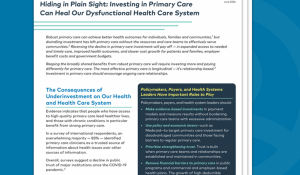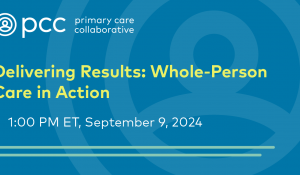You are looking at an archived version of our site. Please visit thepcc.org for a fresh, new experience!
You are here: Array » 2017 Quality Payment P ...
2017 Quality Payment Program Reporting Experience

In 2017, the Centers for Medicare & Medicare Services (CMS) launched the Quality Payment Program, a brand new program that rewards innovation in improving patient outcomes and drives a fundamental movement toward a value-based system of care. The program consists of two participation tracks from which eligible clinicians may choose: The Merit-based Incentive Payment System (MIPS) and Advanced Alternative Payment Models (APMs).
Clinicians participating in MIPS will receive a payment adjustment during the 2019 payment year, either positive, neutral, or negative, based on their performance in 2017. Alternatively, clinicians who participate in an Advanced APM and achieve Qualifying APM Participant (QP) status based
on their performance in 2017 will receive an APM Incentive Payment in 2019. Regardless of the pathway that an eligible clinician may choose, both tracks of the Quality Payment Program incentivize meaningful participation, enhancements in clinical practice, and, most importantly, improved beneficiary outcomes.
The primary goal of this report is to create a comprehensive representation of the overall clinician experience during the inaugural year of the Quality Payment Program. Based on feedback that we have received from clinicians, stakeholders, researchers, and others, we have drafted a concise
report in an effort to highlight the data elements that you have indicated are important in understanding the entirety of the program. This report summarizes the journey of eligible clinicians in both MIPS and Advanced APMs during the 2017 performance year by analyzing several major
aspects of the program:
- Background: Details the historical CMS programs prior to the Quality Payment Program and outlines the program’s strategic objectives.
- Participation: Identifies who was eligible to participate in the Quality Payment Program and provides a breakout of participation rates across both MIPS and Advanced APMs.
- Reporting Options: Highlights the various ways clinicians could submit performance data, specifically for MIPS, to CMS.
- Performance Categories: Discusses the MIPS performance category requirements and provides data on the performance periods as well as measure/activity selection.
- Final Score and Payment Adjustments: Examines the MIPS final scores and payment adjustments across clinicians reporting as individuals, clinicians reporting as a group, and clinicians participating through a MIPS APM.
From the start of the Quality Payment program, we committed to being fully transparent with our data. We anticipate that this report, complete with an accompanying appendix, provides the data needed to illustrate the successes and challenges in 2017, and opportunities for future program years.
We have made significant strides under the Quality Payment Program in 2017, from 95 percent of clinicians avoiding a negative payment adjustment under MIPS to having approximately 99,000 clinicians earning Qualifying APM Participant (QP) status and the associated incentive payment under the Advanced APM track. We look forward to continuing to listen and identify ways to improve the Quality Payment Program to help drive value, reduce burden, and improve outcomes for our beneficiaries.
| Attachment | Size |
|---|---|
| 3.25 MB |
Secondary menu
Copyright © 2024 Primary Care Collaborative



